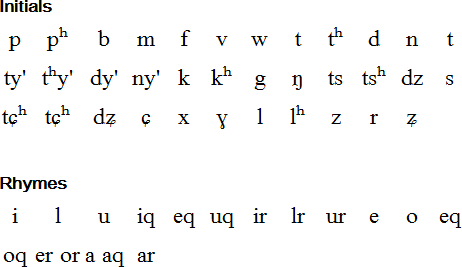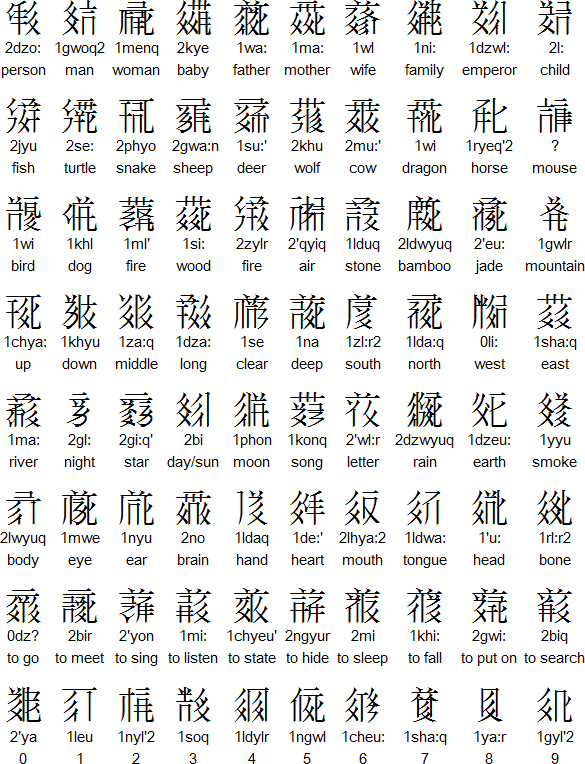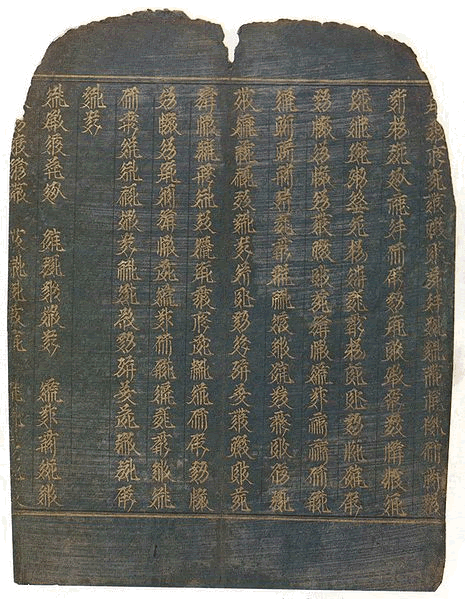
The Tangut script was modelled on the Chinese and Khitan scripts. It was apparently devised by one 'Teacher Iri' in 1037 and was used for the translation of Buddhist texts from Sanskrit and other languages. It was used until the 16th century - the most recent known inscription in the Tangut script dates to 1502.
The Tangut script was deciphered with help from a Chinese-Tangut glossary put together by the Chinese diplomatic service during the 12th century. Many scholars have worked on the decipherment of Tangut, including Nikolai Aleksandrovich Nevsky (Николай Александрович Невский) (1892–1937), who compiled a Tangut Dictionary and made it possible to read Tangut texts thanks to his work on reconstructing Tangut grammatical particles. While it is possible to make some sense of Tangut, current understanding of the language is imperfect, particularly of its syntax.
There are some 10,000 volumes of manuscripts in Tangut, the majority of which are Buddhist texts, legal documents and law codes dating from between the mid-11th century and the early 13th century. There are also Confucian classics and original works in Tangut.
Tangut (𗼇𗟲 / Xi-Xia), an extinct member of the Qiangic branch of the Sino-Tibetan language that was spoken in the Tangut kingdom in north-western China until about the 16th century. Tangut was one of the official languages of the Western Xia Dynasty, which became independent from the Song Dynasty and the start of the 11th century and disappeared after Mongols led by Genghis Khan invaded in 1226.


Note: I think the numbers represent tones: Tangut had two tones (flat and rising).
Source: http://teacher.wtuc.edu.tw/92029/html/tangut/tangutdic2.htm

Source: http://en.wikipedia.org/wiki/Tangut
Information about the Tangut script, language and people
http://en.wikipedia.org/wiki/Tangut_script
http://babelstone.blogspot.com/search/label/西夏文
http://en.wikipedia.org/wiki/Tangut_language
http://en.wikipedia.org/wiki/Tangut
http://teacher.wtuc.edu.tw/92029/html/tangut/index.html
Free fonts containing Tangut characters can be found at:
http://www.mojikyo.org
Tangut font and dictionary (in Japanese)
http://teacher.wtuc.edu.tw/~92029/html/tangut/fdawnload.htm
Northern Qiang, Pumi, Southern Qiang, Tangut
Akkadian Cuneiform, Ancient Egyptian (Demotic), Ancient Egyptian (Hieratic), Ancient Egyptian (Hieroglyphs), Chinese, Chữ-nôm, Cuneiform, Japanese, Jurchen, Khitan, Linear B, Luwian, Mayan, Naxi, Sawndip (Old Zhuang), Sui, Sumerian Cuneiform, Tangut (Hsihsia)
Page last modified: 15.03.23
[top]
You can support this site by Buying Me A Coffee, and if you like what you see on this page, you can use the buttons below to share it with people you know.

If you like this site and find it useful, you can support it by making a donation via PayPal or Patreon, or by contributing in other ways. Omniglot is how I make my living.
Note: all links on this site to Amazon.com, Amazon.co.uk
and Amazon.fr
are affiliate links. This means I earn a commission if you click on any of them and buy something. So by clicking on these links you can help to support this site.
[top]